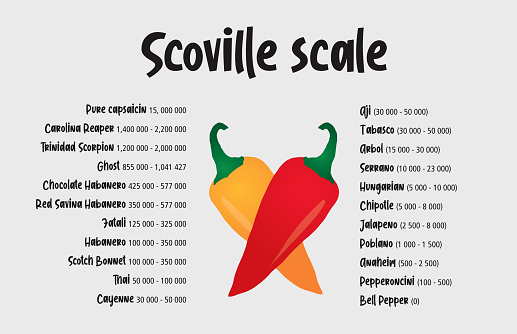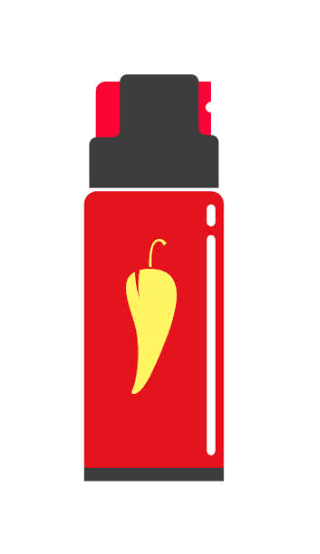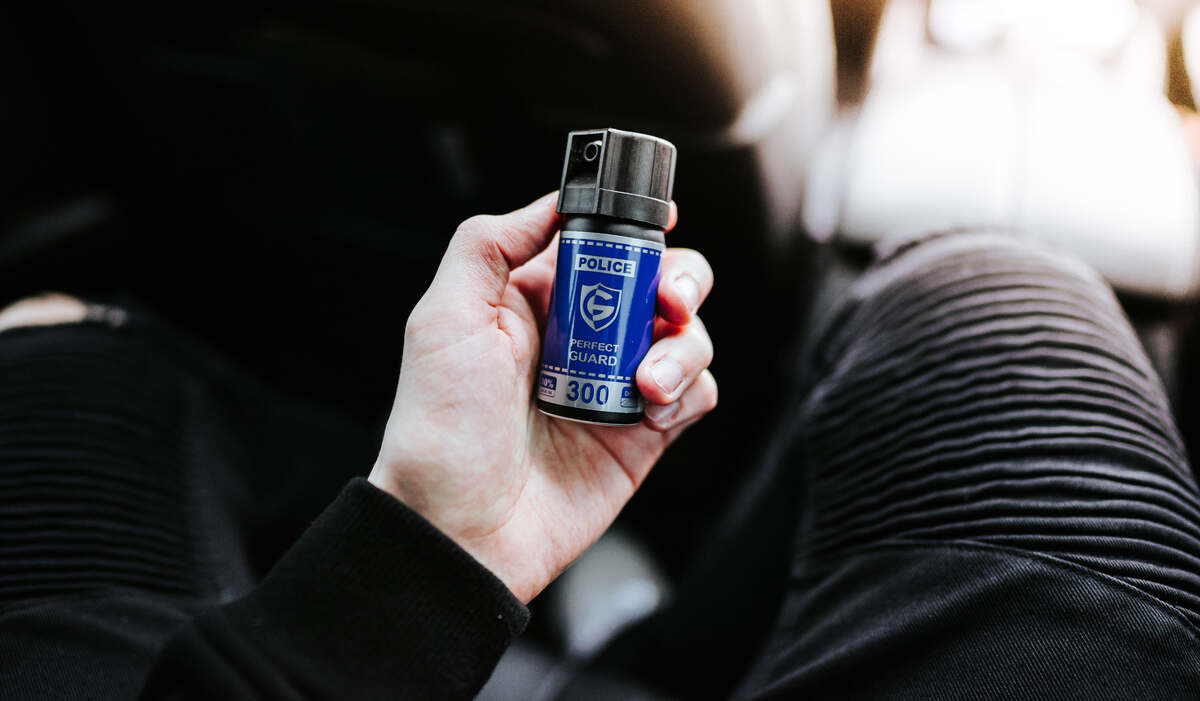If you’ve ever bitten into a spicy chili pepper and felt your mouth ablaze, you might be familiar with the Scoville scale. It’s the measure of the heat, or pungency, of chili peppers, ascribed in Scoville heat units. But have you ever wondered how this scale relates to pepper sprays? It’s time to unravel this connection in our “Pepper Spray Scoville Unit” guide.
Pepper sprays, used primarily for self-defense, also derive their heat from capsaicin, the same compound found in chili peppers. The Scoville scale measures the heat of both these entities, providing a way to compare their intensity.
In this article, we’ll delve into:
- The Scoville scale and how it’s determined,
- The capsaicin content of pepper sprays,
- How the intensity of pepper sprays compares to chili peppers.
- Other uses of the Scoville Scale
Whether you’re a spicy food aficionado or just curious about self-defense tools, this guide should equip you with all the necessary information about the Scoville scale and pepper sprays. So, put on your learning hats, and let’s dive in!
Understanding the Scoville Scale
The Scoville scale is a measurement unit used to quantify the ‘spiciness’ or ‘heat’ of chili peppers. This scale was developed by Wilbur Scoville, an American pharmacist, in 1912. Instead of being a precise scientific measurement, the Scoville scale is more of a subjective standard based on sensory perception.
Scoville Heat Units (SHU) are the units given to the measure of ‘spiciness’. When a chili pepper is rated with a high SHU, it means that it’s extraordinarily hot. For example, Jalapeño peppers score between 2,500 to 8,000 SHU, while the infamous Carolina Reaper holds the current Guinness record with a whopping 1.5 million SHU.
Pepper Spray and the Scoville Scale

How does the Scoville scale relate to pepper spray, you ask? The primary ingredient in pepper spray is capsaicin, the very same compound that gives chili peppers their heat. Consequently, the ‘heat’ of a pepper spray is also measured on the Scoville scale.
Most pepper sprays fall within the range of 2 million to 5.3 million SHU. To put that into perspective, that’s over 200 times hotter than a jalapeño and nearly four times as hot as a Carolina Reaper! Let’s not even talk about the Vexor pepper spray that boasts an insane SHU of 15 million. This intense heat in pepper spray is what causes the temporary blindness, difficulty breathing, and searing pain when it comes into contact with the eyes and respiratory system.
The Science Behind the Burn
Capsaicin interacts with our body’s TRPV1 receptor, which is responsible for perceiving heat and physical abrasion. When capsaicin binds to this receptor, it sends signals to the brain, which interprets it as a burning sensation.
Interestingly, regular exposure to capsaicin can increase one’s tolerance. This phenomenon is why some people can eat extremely spicy foods without flinching.
Other Uses of the Scoville Scale
While the Scoville Scale is widely recognized for its role in the world of spicy foods and pepper sprays, its application is broadening. Scientists and researchers use the scale in various studies, including understanding pain perception and developing treatments for conditions like arthritis, where capsaicin’s properties are beneficial.
Making Sense of it All
At first glance, the figures on the Scoville scale can seem daunting. Here’s a simple comparison to help you understand just how potent these numbers are:
- Jalapeño Pepper: 2,500 – 8,000 SHU
- Carolina Reaper: Up to 1.5 million SHU
- Common Pepper Spray: 2 million to 5.3 million SHU
When you look at it this way, it becomes clear why pepper spray is such an effective self-defense tool. Its high Scoville rating means it packs a powerful punch, capable of incapacitating an attacker and giving you the time you need to escape.
So, the next time you see a bottle of hot sauce boasting a high Scoville rating, take a moment to appreciate just how hot it truly is. And remember, pepper spray isn’t just a hotter version of your favorite hot sauce – it’s a serious self-defense tool with a heat that demands respect.
Bliss Ferdinand is a resilient single mother and the founder of pepperspraymum.com, a blog dedicated to empowering women and promoting personal safety. With a passion for self-defense, Bliss shares her knowledge and experiences to help other mothers protect themselves and their families. Through her blog, she educates her readers about the effective use of pepper sprays, offering valuable insights, product reviews, and practical tips on staying safe in various situations. Bliss’s commitment to her community has inspired many women to take charge of their own security, making pepperspraymum.com a go-to resource for those seeking practical advice and peace of mind

